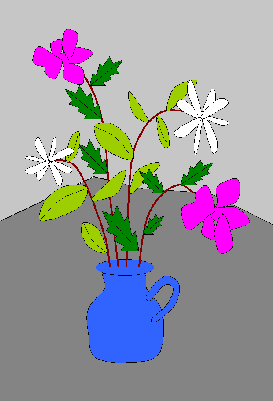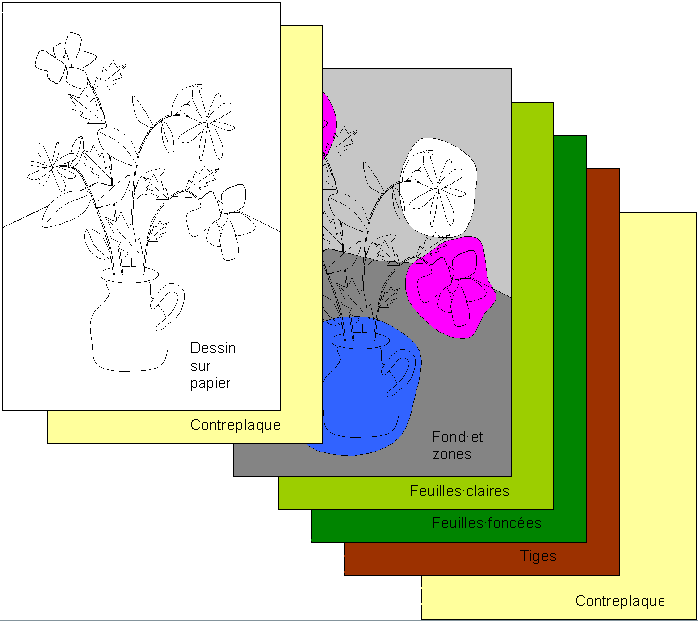
TECHNIQUE BY "SUPERPOSITION"
The technique of marquetry called "by superposition" by Carole Szwarc (CTM n° 6) and also "painting out of wood" (Pierre Ramond, conference of Sorrèze-Revel) is described in the books of Xavier Dyevre and Patrick Delarme. P. Ramond also talks about that in the fisrt volume of his trilogy (Chefs d'oeuvres des marqueteurs) This one consists in superposing in the same package of the different veneers, in order to obtain in final the only one table cut out with the saw in once.
Let us take the example of a bunch of flowers.

Wood necessary are (see the drawing):
- a connection of 2 half different plates (if one wishes 2 tone of gray for the bottom) assembled with the knife,
- 2 flowers are white in 2 zones of the table, and there
will be care to place two veneers parts of sycamore in these 2 zones, larger than cuttings,
- 2 flowers are pink, one will place 2 pieces of wood pink on these sites...
- the blue wood which will represent the vase is to be placed in the zone of the vase,
- the positioning of these "zones" can be facilitated
using a copy of the drawing,
- 2 different greens must represent the sheets, and like
there is a little everywhere in the table, one places 2 complete
plates of the clear and dark greens
- another brown veneer sheet (in the vertical
direction preferably) is added for the stems of the flowers.
In my example, the final table only comprises 8 wood different for a superposition from 5
layers of wood !
One obtains thus only one package to
be cut out in once that one assembles in a "sandwich" of 2 laminate
(example: samba of 2 mm).

